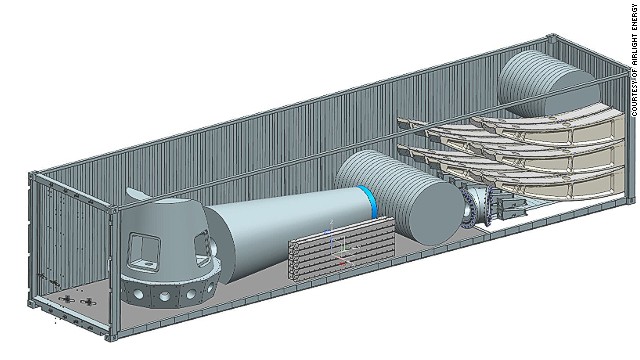|
|
|
Greetings!
This month marks the release of our newest bioenergy product, the OsteoPad, with our own naturopathic Dr.
Panting showing her design for the flannel zippered cover, which
fulfills a long held dream of ours to offer a reasonably priced
pulsed EMF device with a pad that will make any elderly person's
bones stronger AS THEY SLEEP.
We have sold a few of them
already ahead of schedule which have customers reporting tingling
effects in their legs where the pad was placed, since the OsteoPad
produces the proper electromagnetic signal that opens calcium channels in the bone. It takes a few
months to restore bones with osteoporosis but one can have a bone
densitometer test
done before and after a few months. This product finally addresses
the serious health problem in America where one out of every two people are getting some degree of
osteoporosis as they age without weight-bearing exercise (Time, Oct.
5, 2004, p. 101). Try one out today for 30 days at no risk!
As we reported in November's Future
Energy eNews, NIST has a house which they report produces
"free energy" in a northern climate and Dr. A. Hunter
Fanney gave a presentation at the Department of Commerce. Now, here
are her Presentation Slides (pdf format) and you can Watch a video of the presentation. During
this presentation, you will discover just how many virtual dollars
NIST's virtual family of four saved on their energy bills, and what
environmentally-friendly technology, building materials, and
construction techniques got them there.
Another popular topic is how the electric car is
becoming more and more attractive. How about 400 miles on a
single charge? With most cars giving the owners only about 300
miles per tankful of gas, the reliable estimate of at least 350 miles
for a SINGLE electric charge on the newTesla roadster is
even better in our Story #1. We note that both Related Articles
are also very interesting, including the GM Volt update and the electrochemical fuel cell Aether Force car from
Europe that has too much horsepower for a street car
but also about 370 miles for a "tankful" of salt water
electrolyte. Certainly, any of these options are more viable than
paying $67/barrel cost for crude oil from tar sands in Alberta.
Our Story #2 shares an innovative design for a
concentrating solar collector named the Sunflower Solar
Harvester from http://www.airlightenergy.com/ developed
in Switzerland to supply heat AND electricity. One unit supplies 12
kW of electricity from the 2000 times concentrating reflectors. The
company Airlight Energy has also exhibited at the World Future
Energy Summit in Abu Dhabi held in January every year
since 2006, which started seven years after IRI had its first Conference on
Future Energy in 1999. Obviously, future energy is
becoming more and more important to the rest of the world.
Story #3 fulfills another long held dream of a carbon
free "clean coal" plant. It is hard to believe but it
took the Canadian SaskPower at Boundary Dam to beat the U.S. to the
goal of such an attractive accomplishment, capable of reactivating
the foundering coal industry. The plant demonstrates that
so-called carbon capture and storage (CCS) can work at a large scale-a
crucial achievement given that CCS could play a significant role
worldwide in reducing the greenhouse-gas emissions that contribute to
climate change. This is especially important given the new
temperature record set in 2014 of 60.9°F (16°C) for the world's
oceans average which is 1.03°F above the 20th century
average
Story #4 offers a new service available through the
Energy and Environment Studies Institute (EESI) here in DC, listing
major clean energy jobs available around the world. This includes
renewable energy jobs and energy efficiency positions listed mostly
by the energy technology category. Hopefully a few of our readers
will benefit from these opportunities.
Lastly, with the IRI patented Wearable Therapeutic Antioxidant
Clothing design ready to take off in the
licensing arena, especially in the sports industry, we have been
following this trend with other similar inventions. However, it is
surprising how little usefulness is demonstrated in some of the
latest electric clothing innovations, such as Story #5 about Microsoft attempt with a scarf that
heats or vibrates on demand. Compare this with Dr. Panting's patent
designed to absorb antioxidants and quench free radicals on demand,
which increases if the wearer is under stress or creates
perspiration.
Sincerely,
Thomas
Valone, PhD, PE.
Editor
|
|
|

Osteoporosis? Our Newest Item
OsteoPad

EM Pulser
Our best selling device

PREMIER Jr.
Our best selling Tesla coil device

|
|
|
1) The New Tesla Roadser Travels 400 miles on
Single Charge
|
By Brian Fung, Washington Post, December 29, 2014
http://www.washingtonpost.com/blogs/the-switch/wp/2014/12/26/elon-musk-the-new-tesla-roadster-can-travel-some-400-miles-on-a-single-charge/?tid=pm_pop

Car nerds, you just got an extra present under
the tree.
Tesla announced Friday an upgrade for its
Roadster, the electric car company's convertible model, and said that
the new features significantly boost its range -- beyond what many
traditional cars can get on a tank of gasoline.
The company is installing three retrofits for the
vehicle. First up is a battery upgrade that marks a 31 percent
increase in capacity. Next is an "aero kit" that'll alter
the car's profile slightly, producing a 15 percent reduction in wind
drag. Finally, the Roadster will be getting new, more efficient
tires.
The result is an electric vehicle that can
reliably travel about 350 miles before needing a recharge, and
possibly more in ideal conditions. That's pretty similar - or even
better - than many conventional gasoline-powered cars. The
University of Michigan estimates that
the average fuel economy of a new car in 2014 was about 25 miles per
gallon. With a 12- or 13-gallon tank, that gets you about 325 miles
on a single fill-up.
"There is a set of speeds and driving
conditions," Tesla said in a blog post,
"where we can confidently drive the Roadster 3.0 over 400
miles."
The old Roadster
could travel up to 244 miles on
a single charge, according to the company. That makes the new
Roadster's 400-mile range a nearly 2x improvement.
With the Roadster's starting
price still hovering at over $100,000, most of us won't be
reaping the benefits of this technology upgrade anytime soon. But,
said company founder Elon Musk, expect it to arrive eventually in
the Model S.
"It obviously *will* happen
long-term," he tweeted.
The announcement came amid
predictions of a rough road ahead for the company. Morgan Stanley's
Adam Jonas, who has been an advocate for the company as its
stock price has soared, wrote in a note to investors earlier this
month that Tesla's prospects will be seriously impacted by lower
gasoline prices.
Jonas predicted Tesla will only
be able to sell 300,000 vehicles by the end of the decade rather than
the half million that he originally forecast. He added that the low
price of oil won't immediately effect Tesla's current customers, who
generally wealthy and pay less attention to gas prices. But as the
company tries to sell cars to a broader base, fewer consumers may opt
for electric cars.
RELATED ARTICLES
After the Volt, how will
GM deliver a 200 Mile Bolt?
http://www.technologyreview.com/news/534181/can-gm-go-from-volt-to-bolt/?utm_campaign=newsletters&utm_source=newsletter-weekly-energy&utm_medium=email&utm_content=20150119
Car
Powered by Salt Water?
http://aetherforce.com/electric-car-powered-by-salt-water-920-hp-373-milestank/
back to table of contents
|
2) Solar
Sunflowers Can Bring Bring Clean Energy Anywhere
|
By Peter Shadbolt, CNN January 2015
http://www.cnn.com/2014/12/16/tech/innovation/sunflower-solar-harvester/index.html

Imagine a transportable solar
power station that tracks the sun like a sunflower and cools itself
by pumping water through its veins just like a plant.
The Sunflower Solar Harvester,
developed by the Swiss company Airlight Energy, can do all that and
in the process produce heating, desalinated water, and refrigeration
from the 12kW of energy it provides from just 10 hours of sunlight -
enough to power several households.
Aimed at off-grid communities in
remote regions, the all-in-one 10m-high system -- whose components
can be transported in a single container and reassembled in situ -
has been in development for more than two years and could be on sale
as early as mid-2017.
Integrated system
"It's an integrated system
so it supplies both electricity and heat," head of research at
Airlight Energy, Gianluca Ambrosetti, told CNN. "You can use
this heat to drive a cooling system too, if you need
refrigeration."
He said the system will appeal
to those that have multiple requirement and a lot of sunlight.
"It's not going to work so
well if you have a lot of requirements and you have the climate of,
say, Germany."
Nevertheless, off-grid regions
from as disparate and far-flung places as North Africa, the Middle
East, the United States, Chile and Australia have expressed an
interest in the technology.
"Then there are those
regions that have good solar radiation and high fossil fuel prices
such as Japan which is not an obvious place for this sort of system,
but where we see a lot of potential," Ambrosetti said.
Water-cooled
At the core of the technology
are IBM-designed water-cooled solar panels whose microchannels carry
away the heat produced by the reflector mirrors. The flower-like
array of reflectors concentrate the sun's energy more than 2,000
times onto the six panels which each hold 25 photovoltaic chips.
The heat is carried away by the
water at a rate that keeps the microchips at their optimum
temperature, making the Sunflower Solar Harvester one of the most
efficient solar energy producers around.
Developers say that it needs
just a quarter of the panels to produce the same amount of power as
conventional systems.
Everything about its design is
aimed at bringing down costs; what would normally require large and
expensive solar mirrors is achieved with metallised foil of the type
found in food packaging like potato chips.
The concave shape of the
reflectors is kept in place by a light vacuum, a useful failsafe if
the cooling system fails. Rather than overheating the solar cells,
the operator can simply release the vacuum to diffuse the reflected
sunlight.

Remote appeal
While the company is not
claiming the technology will completely replace fuel-powered
generator sets -- which can often produce 10 times the power of one
solar sunflower -- Ambrosetti said it could be possible to run some
remote facilities with an array of the parabolic mirrors.
"You would, of course, not
have just one Sunflower but several so you can scale it up quite
easily," he said. "Hospitals, for instance, are quite
energy intensive -- if you needed 1.2mW to run a hospital you'd need
100 sunflowers.
"But if you were in a small
camp hospital with minimal refrigeration requirements for medicines,
it could be set up in a remote location and just one dish could
satisfy quite a lot of those needs."
The system produces around 20kW
of thermal power from 10 hours of sunlight, enough say the developers
to power a low-temperature desalinator in coastal regions. Sea water
vapor would pass through a polymer membrane and condense in a
separate chamber, to produce as much as 2500 liters of fresh water
per day.
Vascular system
Ambrosetti said the cooling
system drew its inspiration from nature where vascular systems
operate to carry away excess heat.
"We are still a long way
from commercialization, but what we can do is to tap into its
potential. We plan to set up early adopter projects that would be
running by 2016," he said. "We aim to have four or five
dishes in various locations around the world to show the potential of
the system so people can really start to touch it with their
hands."
Ambrosetti said the system was
likely to appeal commercially to green residential and commercial
developments.
"It's biggest potential is
in making integrated systems where you can provide several things at
once such as heating, cooling and electricity," he said.
The project also recently got
nominated as the top "solar wonder" of the world by
Greenpeace.
back to table of contents
|
3) First
Coal Plant that Captures Its Carbon Emissions
|
|
By Peter
Fairley, MIT Technology Review

Sequestration shows the potential of a crucial
technology.
Boundary dam, a power plant in Estevan,
Saskatchewan, is the first commercial coal-fired plant to capture
carbon dioxide from its emissions, compress the gas, and bury it
underground. The plant demonstrates that so-called carbon capture and
storage (CCS) can work at a large scale-a crucial achievement given
that CCS could play a significant role worldwide in reducing the
greenhouse-gas emissions that contribute to climate change.
Right now only two other CCS power-plant projects
are under construction, both of them in the United States. That's
because CCS carries a hefty price tag: SaskPower invested $1 billion
to equip one of the four generators at its Boundary Dam site for
carbon capture. What's more, the process reduces the 160-megawatt
plant's electricity output by about 20 percent, meaning it may cost
SaskPower more per kilowatt-hour to run CCS than the 12 cents it gets
for selling the electricity.
SaskPower makes up for this in
large part by selling much of the captured carbon dioxide to the
Calgary-based oil producer Cenovus, which uses it to boost output
from its maturing oil wells nearby.
CCS should get cheaper over
time. The Intergovernmental Panel on Climate Change, the panel of
climate scientists convened by the United Nations, projects that
technology upgrades and economies of scale should reduce the price of
adding CCS to coal plants to just one-third of what SaskPower spent
at Boundary Dam. If so, CCS-equipped coal plants could deliver
electricity more cheaply than some other low-carbon sources,
including offshore wind power and large solar farms.
SaskPower says that with the
lessons it's learned so far, it could now build a similar CCS project
for $200 million less, and that it may soon go forward with CCS at
two other aging coal generators at Boundary Dam. It also hopes to
help other power companies develop expertise in the technology.
Still, coal plants around the
world generally have little incentive to follow suit. In SaskPower's
case, Canadian regulations helped force the company's hand; that
fact, plus the availability of a local buyer for carbon dioxide,
makes SaskPower's effort somewhat unusual. What might be needed
elsewhere is a way for utilities to pass along CCS costs to
customers, just as many do now to pay for renewable energy sources.
Another approach would be to tax carbon dioxide emissions, creating
an incentive to bury the gas instead.
The technology must also be
proven to work over the long term. SaskPower buries some gas in a
saline aquifer on its site. To make sure it stays put, the company
has installed above-ground gas sensors plus a seismic sensing array
to track subsurface movement.
The United Nations climate panel
says similar technology must be installed at all 7,000 existing coal
power plants worldwide by 2050 to keep warming below 2 °C, a widely
cited threshold for avoiding severe climate change. Meanwhile, new
coal plants are still being built, especially in China and India.
With coal plants expected to provide one-quarter of the world's
energy supply in 2040, SaskPower could help test the feasibility and
safety of burying billions of tons of carbon dioxide emissions.
|
4) Clean
Energy Jobs Around The World
|
By Yi Xu, EESI
Journal December 30, 2014
There
is no official, global definition of green jobs, but one can adopt
the definition used by the United Nations Environmental Programme
(UNEP) in its 2008 report, Green Jobs: Towards Decent Work in a
Sustainable, Low-Carbon World. The report defines green jobs as jobs
"in agricultural, manufacturing, research and development
(R&D), administrative, and services activities that contribute
substantially to preserving or restoring environmental quality."
This includes jobs in renewable energy, energy efficiency in
buildings, sustainable transportation, sustainable agriculture, and
responsible forestry management.
The following two sections
gather employment figures for energy efficiency and renewable energy
sectors globally and in different countries. The figures are sourced
from international organizations, including the United Nations
Environmental Programme (UNEP), International Labour Organization
(ILO), and International Renewable Energy Agency (IRENA).
The Annual Review on
Renewable Energy and Jobs of 2014 report from the International
Renewable Energy Agency (IRENA), showed a total of 6.5 million jobs
around the world supported by the renewable energy sectors. Among all
the countries, China, Brazil, the United States, India and Germany
are the top five largest employers for renewable energy industries.
Solar photovoltaic and wind power are the two most dynamic renewable
energy sectors, according to IRENA. The solar photovoltaic sector
supported 2..3 million jobs; the wind power sector supported 0.8 million
jobs.
The following are examples of
green jobs in the countries and regions with the largest amount of
renewable energy employment.
China: According to IRENA,
China was the largest employer in the renewable energy sector in
2013, employing 2.64 million people. China's solar photovoltaic
sector employed 1.6 million people last year (60 percent of total
renewable energy employment), with 1.1 to 1.3 million more jobs than
2011 employment estimates. However, the data also showed that
employment has decreased in the sectors of solar heating and cooling.
IRENA explained that this is due to different methods of calculation.
Brazil: In total, Brazil's
renewable energy industries supported 894,000 jobs in 2013. IRENA's
annual report estimated that bioenergy was the largest renewable
energy sector in Brazil, with 539,000 direct jobs in bioethanol and
82,000 biodiesel jobs. Wind power is also growing quickly and
supports about 32,000 jobs.
European Union (EU): IRENA
estimated that the European Union supported around 1.2 million
renewable energy jobs in 2013. Sustainlabor estimated in a
report, Green Jobs and Related Policy Frameworks, that the major
generator of clean jobs in the European Union was solid biomass,
which supported 273,000 direct and indirect jobs in 2010. The solar
photovoltaic and wind power sectors, which supported an estimated
268,110 and 253,145 jobs respectively in 2010, were also two
significant sectors.
Germany: According to
IRENA, Germany is the largest renewable energy employer in the
European Union. Although Germany has seen some job losses, it still
supported 371,000 direct and indirect jobs in renewable energy in
2013. The German wind power industry expanded to support a record
138,000 jobs, while the solar photovoltaic industry has lost about
55,000 jobs since 2011, with most of the job losses coming from
decreased manufacturing employment.
Solar: According to
Environmental Entrepreneurs, the solar industry was the top performer
in 2013 for generating clean energy jobs. The Solar Foundation
estimated there were close to 143,000 solar jobs in the United States
in 2013, including 24,000 new jobs announced that year. The rate at
which jobs were added in 2013 was more than 20 percent over 2012
levels.
Wind: In a 2014 report, the
American Wind Energy Association (AWEA) indicated that the wind
energy industry directly supported 50,500 full-time-equivalent jobs in
2013. AWEA cited a Navigant Consulting study it commissioned which
predicted that if the Federal Production Tax Credit (PTC) were
extended for four more years, it would support 54,000 additional jobs
over that period, representing a 33 percent growth rate. The study
also predicted a 50 percent cut in wind industry jobs in the absence
of a PTC.
Hydropower: According to a
2014 report from the American Council On Renewable Energy (ACORE),
the hydropower industry supports 200,000 to 300,000 jobs in the United
States, as well as a supply chain of more than 2,500 companies. A
Navigant Consulting study found the industry could support an
additional 230,000 to 700,000 direct and indirect jobs by 2025 and
expand its capacity by 23-000-60,000 megawatts (MW) with policies
supportive of hydropower development.
Geothermal: In a May 2014
report, the International Renewable Energy Agency (IRENA) found that
the geothermal industry supported 35,000 direct and indirect American
jobs from 2012-2013. The Geothermal Energy Association (GEA)
estimated in a 2013 report that the geothermal industry is able to
generate about 25,000 more jobs than the natural gas industry at a
capacity level of 500 MW.
Wave & Ocean Power: The
Brookings-Battelle Clean Economy Database found 371 people working in
the wave and ocean power sector in 2010. The Ocean Renewable Energy
Coalition, in partnership with the U.S. Department of Energy,
published a roadmap for wave and ocean power in 2011 which found that
if the industry grew to a capacity of 15 gigawatts (GW) by 2030, it
would support 36,000 direct and indirect jobs.
Biomass: According to
IRENA, the biomass industry supported an estimated 152,000 direct and
indirect jobs in the United States during the 2012-2013 period,
including 15,500 direct jobs. According to the Biomass Power
Association (BPA), the power section of the biomass industry employs
18,000 people in the United States, mostly in rural areas. BPA
estimates biomass power can generate 10 times as many well-paid jobs
as a comparable conventional natural gas facility.
Waste-to-Energy: A 2014
report from ACORE on renewable energy in America reported that the
waste-to-energy industry, defined as "energy generated from the
sustainable management of municipal solid waste," directly supported
5,350 jobs and indirectly supported 8,600 jobs - a total of close to
14,000 jobs. Government Advisory Associates estimated that each
direct waste-to-energy job supports 1.6 additional jobs.
Fuel Cells: Fuel Cells 2000
estimated in 2011 that 10,845 jobs were supported by the fuel cell
industry, including 3,615 direct and 7,230 indirect jobs. The U.S.
Department of Energy estimated that with the rapid increase in the
adoption of fuel cells, 180,000 new domestic jobs could be created by
2020, and 685,000 jobs by 2035.
Biogas: The American Biogas
Council (ABC) estimated in 2014 that there are currently 2,000
operational biogas systems, with a market potential for 12,000
additional systems. In June 2012, ABC Executive Director Patrick
Serfass estimated there were more than 2,200 biogas-producing sites
operating, including 186 digesters on farms, 1,500 digesters at
wastewater treatment plants, and 576 landfill-based energy projects.
Although there is no data available for current employment, ABC
estimated in 2014 that the biogas industry could support 300,000
construction jobs and 20,000 permanent jobs.
Renewable Fuels: According
to the Fuels America coalition, the renewable fuels industry - which
includes biodiesel, conventional and cellulosic ethanol, as well as
advanced biofuels and their suppliers - supported 852,056 jobs in
2014. Among these jobs, 292,166 are direct jobs, 226,098 are induced
jobs, and 333,792 are jobs in supplier chains. The following is a job
breakdown for the three main sectors of renewable fuels.
|
|
Ethanol: In
a report commissioned by the Renewable Fuels Association, the
consulting firm ABF Economics found that in 2013, there were
386,781 jobs in the ethanol industry, including 86,503 direct jobs.
Moreover, jobs in the ethanol industry generated more than $44
billion for the U.S. economy.
|
|
|
Biodiesel: In
November 2013, LMC International released a study commissioned by
the National Biodiesel Board estimating that the U.S. biodiesel
industry supported more than 62,000 jobs and $2.6 billion in wages
in 2013. The National Biodiesel Board also predicted the industry
would likely produce a record 1.7 billion gallons in 2013. However,
in a leaked EPA document on potential Renewable Fuel Standards
(RFS) for 2014, EPA proposed limiting the RFS volume for biodiesel
to 1.28 billion gallons. If this limit was implemented, the United
States would potentially lose 8,000 jobs.
|
|
|
Advanced
Biofuels: According to E2's Advanced Biofuel Market
Report of 2013, advanced biofuel companies - companies that
focus on cellulosic ethanol, cellulosic butanol,
"drop-in" fuels from non-food sources, and biodiesel from
non-virgin oil - support about 4,500 direct, full-time jobs
(excluding supply chain employment). The number of jobs is expected
to increase to 8,000 with 2016 production and expansion plans. The
report also said that by 2016, the industry supply chain could
reach 12,300 full-time jobs in feedstock production and 33,000
temporary jobs for construction and new facilities related to the
advanced biofuel industry.
|
The International Renewable
Energy Agency (IRENA) did a separate estimate of jobs in the
renewable energy industry in the United States, finding a total of
625,000 direct and indirect jobs in the solar, biofuel, wind,
biomass, hydropower and geothermal industries.
back to table of contents
|
5)
Microsoft Quest For Wearable Electronics
|
|
By Rachel Metz, MIT
Technology Review, January 20, 2015
 In the quest to make wearable
electronics useful, researchers take a close look at the neck. In the quest to make wearable
electronics useful, researchers take a close look at the neck.
Microsoft researchers have
created a scarf that can be commanded to heat up and vibrate via a
smartphone app, part of an exploration of how the accessory could
eventually work with emerging biometric- and emotion-sensing devices.
It could, perhaps, soothe you if a sensor on your body determines
you're down-a function that could be particularly useful for people
who have disorders such as autism and have trouble managing their
feelings.
A paper on the project, called
Swarm (Sensing Whether Affect Requires Mediation) was presented on
Sunday at the Conference on
Tangible, Embedded, and Embodied Interaction at
Stanford University.
Michele Williams,
a paper coauthor and graduate student at the University of Maryland,
Baltimore County, who worked on the project while she was an intern
at Microsoft Research, says the group chose to focus on a scarf in
part because it can be a discreet way to house technology, unlike,
say, a medical device.
The current prototype-which the
researchers made after consulting with people with autism and hearing
and visual disabilities-is a flexible laser-cut garment made of
hexagons of industrial felt overlaid with conductive copper taffeta.
Some of the modules can heat up, while others can vibrate.
All the modules are controlled
by one master module that is also responsible for communicating with
the smartphone app over Bluetooth. The modules link together with
metal snaps and are interchangeable; if you want a heat-producing
module closer to your stomach and a vibrating one on your neck, you
can unsnap the chain and reconfigure it, says Asta Roseway,
a principal research designer at Microsoft Research and a paper
coauthor.
Roseway demonstrated for me over
a video call how the scarf works. She pulled it off a mannequin and
wrapped it around her neck, unsnapping one module and then snapping
it on to the end of the chain. She turned it on and paired it with a
Swarm app on a smartphone, then turned on the vibration function.
Though the metallic design of
the scarf might appeal to some, it's meant to fit inside a sleeve
when worn, researchers say. That way, "you don't have to show
everyone, 'Hey I've got tech all over me," Roseway says.
"It's subtle."
Williams would like to add the
ability to cool the wearer-potentially useful for calming you down
since sweat can be an indicator of stress-and add a music player so
people could activate custom playlists based on their moods.
For now, though, the project is
more concept than creation. Because Swarm was a project undertaken
during Williams's internship, it's unclear whether work on it will
continue.
back to table of contents
|
About Integrity
Research Institute
Future Energy eNews is provided as a public
service from Integrity Research Institute, a Non-Profit dedicated
to educating the public on eco-friendly emerging energy
technologies.
FREE
copy of
the 30 minute DVD "Progress in Future Energy" is
available by sending an email with "Free DVD" in
subject and mailing address in body.
Your generous support is welcome by making a tax
deductible donation on
our secure website
|
|
|
|
|
|
![]()




















